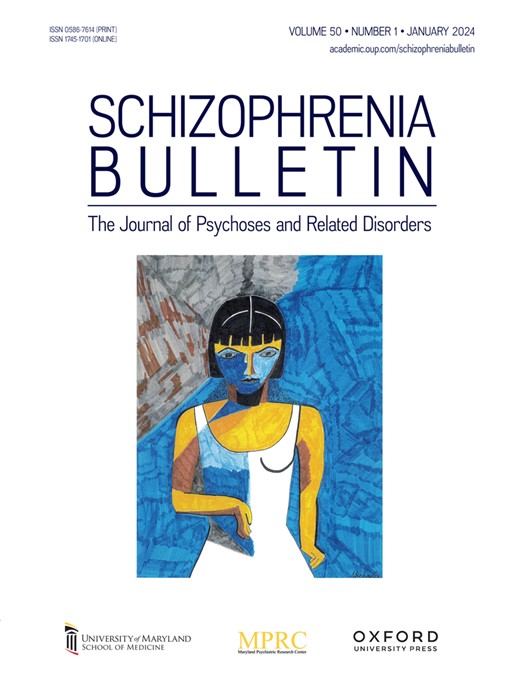108 THE IMPACT OF AGING FRIENDLY DESIGN OF RESIDENTIAL BUILDINGS FOR THE ELDERLY ON THE SYMPTOMS OF ELDERLY PATIENTS WITH SCHIZOPHRENIA
IF 5.3
1区 医学
Q1 PSYCHIATRY
引用次数: 0
Abstract
Background With the aging of the population, the number of elderly patients with schizophrenia is increasing year by year. These patients not only face mental health problems, but also face increased physical and psychological burdens due to the uncomfortable aging of their living environment. Studies show that an aging-appropriate design can improve quality of life and mental health in older adults, but there is a relative lack of research on its impact on symptoms in older adults with schizophrenia. Aging-appropriate design includes accessible access, adequate lighting, safety handrails, etc. These design elements may have a positive impact on the daily life and symptom management of elderly patients with schizophrenia. The study aims to explore whether the aging-appropriate design of residential buildings in the elderly can reduce the symptoms of elderly people with schizophrenia, improve their quality of life, and provide theoretical basis and practical guidance for future architectural design. Methods The study selected 300 elderly patients with schizophrenia over 60 years old, all of whom lived in buildings with different aging degrees. A randomized controlled trial will randomize participants into two groups: aging design and traditional design. The buildings of the aging design group were renovated, including barrier-free access, adequate lighting and safety handrails, while the buildings of the traditional design group were kept as is. The duration of the study was 12 months, during which participants were collected through an electronic health record system, including delusions, delusions, social withdrawal, etc. In addition, participants symptoms were quantified using the Schizophrenia Symptom Scale (SAPS) and the Positive and Negative Symptom Scale (PANSS). Results Data analysis showed that the SAPS and PANSS scores in the aging design group were significantly lower during the 12 months compared with the control group. Specifically, the SAPS score decline averaged 2.5 points (P=0.01) and PANSS scores decreased by 3.0 points (P=0.02). In addition, social withdrawal behavior in the aging design group was decreased by 30% (P=0.03) and 25% (P=0.04) and 20% (P=0.05), respectively. These results suggest that an aging-appropriate design may have a positive effect on reducing symptoms in older adults with schizophrenia. Discussion The results of the study indicate that age-appropriate design has a significant positive impact on symptom management in elderly patients with schizophrenia. Improving the safety and comfort of the living environment may help patients reduce anxiety and fear, thereby alleviating symptoms. These findings are important for the design of buildings for the elderly, indicating the need to consider the needs of elderly patients with schizophrenia when designing. Aging friendly design improves patients’ quality of life and may reduce the use of medical resources. Future research can further explore the specific impact of different types of age-appropriate design elements on patient symptoms, as well as how to better integrate these design elements into existing residential buildings. At the same time, research can also be extended to other types of mental illness patient populations to evaluate the applicability and effectiveness of age-appropriate designs for a wider population. In summary, the study provides preliminary theoretical support for the application of age-appropriate design in the field of mental health for the elderly, and offers new ideas for achieving more humane living environment design. Funding No. 52378039.求助全文
约1分钟内获得全文
求助全文
来源期刊

Schizophrenia Bulletin
医学-精神病学
CiteScore
11.40
自引率
6.10%
发文量
163
审稿时长
4-8 weeks
期刊介绍:
Schizophrenia Bulletin seeks to review recent developments and empirically based hypotheses regarding the etiology and treatment of schizophrenia. We view the field as broad and deep, and will publish new knowledge ranging from the molecular basis to social and cultural factors. We will give new emphasis to translational reports which simultaneously highlight basic neurobiological mechanisms and clinical manifestations. Some of the Bulletin content is invited as special features or manuscripts organized as a theme by special guest editors. Most pages of the Bulletin are devoted to unsolicited manuscripts of high quality that report original data or where we can provide a special venue for a major study or workshop report. Supplement issues are sometimes provided for manuscripts reporting from a recent conference.
 求助内容:
求助内容: 应助结果提醒方式:
应助结果提醒方式:


